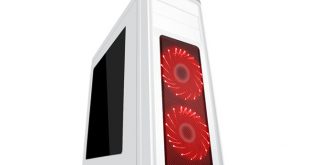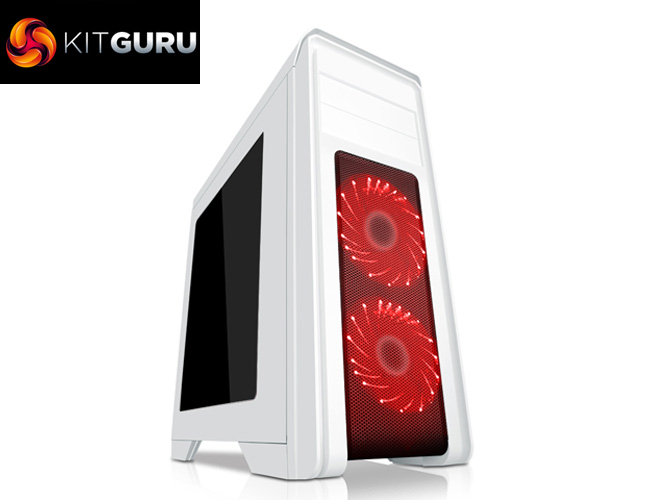
Usually when a case costs just £39.99, we would expect the bare minimum of features and ‘iffy' build quality. However, Game Max are trying to change that with their Falcon RGB case. It features two 120mm RGB fans at the front, as well as a PSU shroud, acrylic window side panel and two integrated fan controllers. Could this become the go-to case if you are on a tight budget?
While Game Max may not be a brand you would typically associate with luxurious PC cases, we are nonetheless interested to see how the Falcon RGB chassis gets on. With a price of £39.99, the Falcon is definitely at the ultra-budget end of the spectrum – in this review we assess the build quality, practicality and cooling performance to see if it is worth the cash.
Specification
- Motherboard Support: ATX, Micro ATX
- PSU Support: Standard ATX
- PSU Location: Bottom
- Gaming Case: Yes
- Water Cooling: Water Cooling Ready
- Supported Radiator Size: 240mm
- Supported Radiator Positions: Front, Top
- Body Material: SPCC 0.6mm
- Front Bezel Material: Plastic and Mesh
- Side Panel: Window
- Internal Cable Management Depth: 21mm
- External Bays: 2 x 5.25″ External
- Internal Bays: 2 x 3.5″ Internal, 5 x 2.5″ Internal
- Drive Bay Notes: 2 x 2.5″ bays use 3.5″ bays
- Expansion Slots: 7 x Full Size
- Cooling Front: 2 x 120mm or 2 x 140mm (2 x 120mm RGB LED Included)
- Cooling Top: 2 x 120mm Fan
- Cooling Rear: 1 x 120mm Fan (1x 120mm included)
- Cooling Side: None
- Cooling Bottom: Filtered Vent for PSU
- Fan Controllers: 2 Fan Controllers, controlling up to 6 fans in total
- IO Ports: 2 x USB 3.0, 2 x USB 2.0, 1 x HD Audio, 1 x Microphone
- GPU Max Length: 415mm
- CPU Cooler Max Height: 161mm
- Front Bezel Colour: Black
- Body Colour: White
- PSU Included: No
- Unit (Product) Dimensions (mm): 202mm x 505mm x 473mm (W x H x D)
 KitGuru KitGuru.net – Tech News | Hardware News | Hardware Reviews | IOS | Mobile | Gaming | Graphics Cards
KitGuru KitGuru.net – Tech News | Hardware News | Hardware Reviews | IOS | Mobile | Gaming | Graphics Cards



